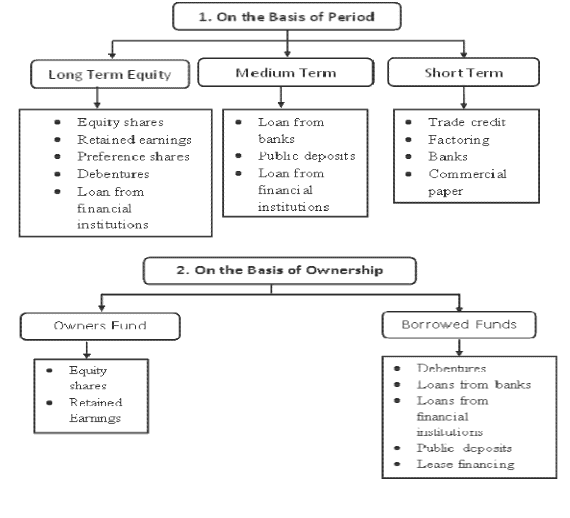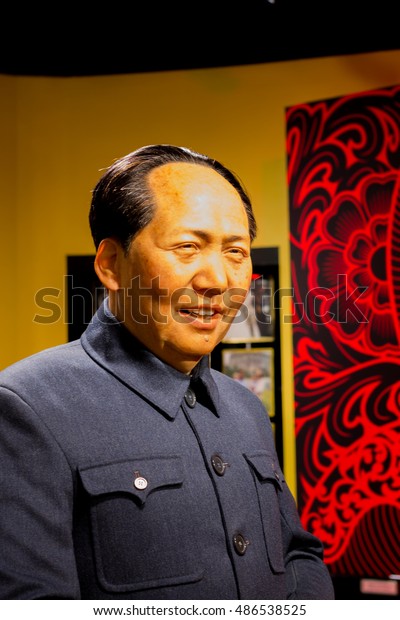SOURCE OF BUSINESS FINANCE
Introduction: It
provides an overview of the blog different sources of money can also be bought
to start running a business. It also discusses the advantages of various sources and
factors that determine one's a suitable source of trade finance. This is
important for anyone who wants to start a business to know about different
sources where money can be raised. It this also important to know relative
properties and sources so that choice of a suitable source can be made
MEANING AND IMPORTANCE OF SOURCE OF BUSINESS
FINANCE: Essential finance for
businesses to set up and run their operations is known as business finance. No business
can function without sufficient funds to undertake various undertakings activities.
Money is required for the purchase of fixed assets (fixed capital) requirements,
to run day-to-day operations (working capital requirement), and to undertake growth and expansion plans in a
business organization.
CLASSIFICATION OF SOURCES OF FUNDS: Various sources of funds available for a business
can be classified according to three major bases, which are:
(i)
Time period
(long, medium, and short term),
(ii)
Ownership (owner's fund.)and borrowed funds,
and
(iii)
The source of
production (internal sources and external sources).
LONG, MEDIUM AND
SHORT-TERM SOURCES OF FINANCE: Sources that provide funds
for a period of more than 5 years are called long-term sources. A source that meets
the financial requirements for a period exceeding one year but not more than 5 years
are called medium-term sources and those sources which the provision of funds for
a period of more than one year is called short terms source.
OWNER'S FUNDS AND BORROWED FUNDS: Owner's funds refer to the fund which is provided
by the owners of an enterprise. Borrowed capital, on the other hand, refers to
money that is generated by way of loan or borrowing from another person or institution.
INTERNAL AND EXTERNAL SOURCES: The internal sources of capital are generated within
the business, such as through the retained profits. On the other hand,
external sources of capital are those which are arranged from outside such as
finance provided by suppliers, lenders, and investors.
SOURCES OF BUSINESS FINANCE: Sources of money available for business includes
retained earnings, business credit, factoring, lease financing, public deposits,
commercial paper, and the issue of shares and debentures commercial banks,
financial institutions, and international sources of finance.
RETAINED
INCOME: This is part of the
company's net income. Earnings not distributed as dividends are known as retained
earnings. An amount of available retained earnings depend on the company's
dividend policy. This is usually used for the growth and expansion of the company.
Trade Credit: Credit given by one trader to another for purchasing goods
or services are known as trade credit.
Trade credits provide a business loan purchase facility supplied on
credit. Business loan terms vary by industry to industry.
FACTORING: Factoring has emerged as a popular source of
short-term funds in India in recent years. It is a financial service whereby the
factor is responsible for all providing credit control and debt recovery from the
buyer and protection against any bad credit loss to the firm. There are two methods
of factoring- recourse and non-recourse factoring.
LEASE
FINANCING: A lease is a contractual agreement under which the
owner of the property (the lessee) gives the other party (the lessor) the right
to use the property. The lessee makes periodic payments to let the property outside
for some specified period, the term is called the lease rent.
PUBLIC
DEPOSIT: A company can raise money by
inviting the public to make a deposit. The deposit can take care of both longtime and
short-term financial needs of the business. The interest rate on deposits is
generally higher than what is offered by banks and other financial
institutions.
COMMERCIAL PAPER (CP): It is
an unsecured promissory note issued by a firm that usually ranges from 90 days to
364 days. Being unsecured, only those firms which have good credit ratings can
issue CP and its regulation comes under the Reserve Bank of India.
ISSUANCE OF EQUITY SHARES: Equity
Shares represent the owned capital of the company. Because of their fluctuating
earnings, equity shareholders are called Company's risk carriers. These shareholders
enjoy high returns from the company during the prosperity period.
They have voting rights in the management of the company
ISSUE OF
PREFERENCE SHARES: These confer a preferential
right to the share shareholders in respect of payment of income and repayment
of Capital. Investors who prefer stable income without taking on high risk prefer
these stocks. A company can issue different types of preference shares.
ISSUANCE OF DEBENTURES: Debentures represent the debt capital of a company
and the holders of the debentures are the creditors. These are fixed-charged funds
which has a fixed interest rate. Issuance of debentures is suitable when the
company's sales and earnings are relatively stable.
COMMERCIAL BANKS: Banks
provide short and medium-term loans to firms in every size. The loan is repaid
either in a lump sum or in installments. The interest charged by the bank depends
on factors including characteristics of the borrowing firm and the level of
interest rates in the economy.
FINANCIAL
INSTITUTIONS: Established by both
Central and State Governments. Many financial institutions across the country
to provide industrial finance to companies engaged in the business. This is also called the development Bank. This
source of financing is considered suitable when there are large funds it is
necessary for the expansion, restructuring, and modernization of the enterprise.
INTERNATIONAL
FINANCING: With the liberalization and globalization of the economy,
Indian companies have started raising funds from international markets.
International sources from which funding can be obtained include foreign
currency (FCNR) loans from commercial banks. Financial assistance provided by
international agencies and development banks, and issuance of financial instruments
in International Capital Markets (GDR/ADR/FCCB).
FACTORS
INFLUENCING CHOICE: Effective
evaluation of various sources should be established by the business to achieve
its main objectives. Choose the source of business finance depends upon factors
like cost, financial soundness, risk profile, tax benefits and flexibility to
receive funds. Need these factors the analysis should be done simultaneously
while taking the decision for the choice of suitable Source.
In this blog, I explained
in detail all aspects of the source of business finance.
This is useful for the civil service aspirants and all
other higher secondary students also. If anything is missed in this may be a comment
in the comment box. I wish all my readers once again. My HAPPY CHRISTMAS to all
my valued readers…thank you




